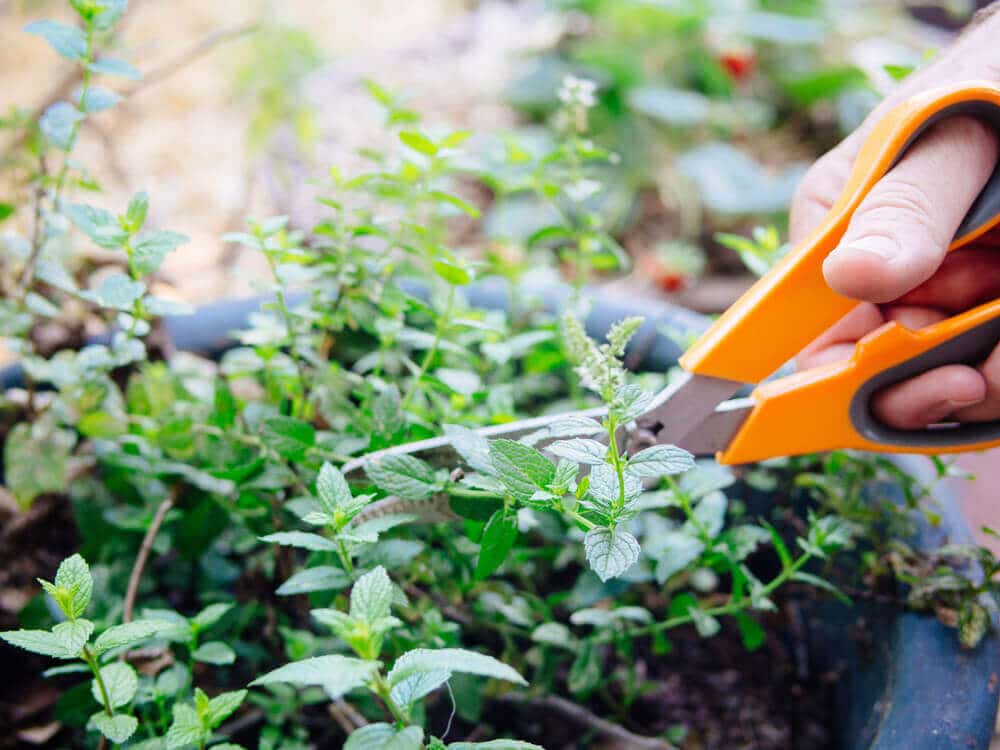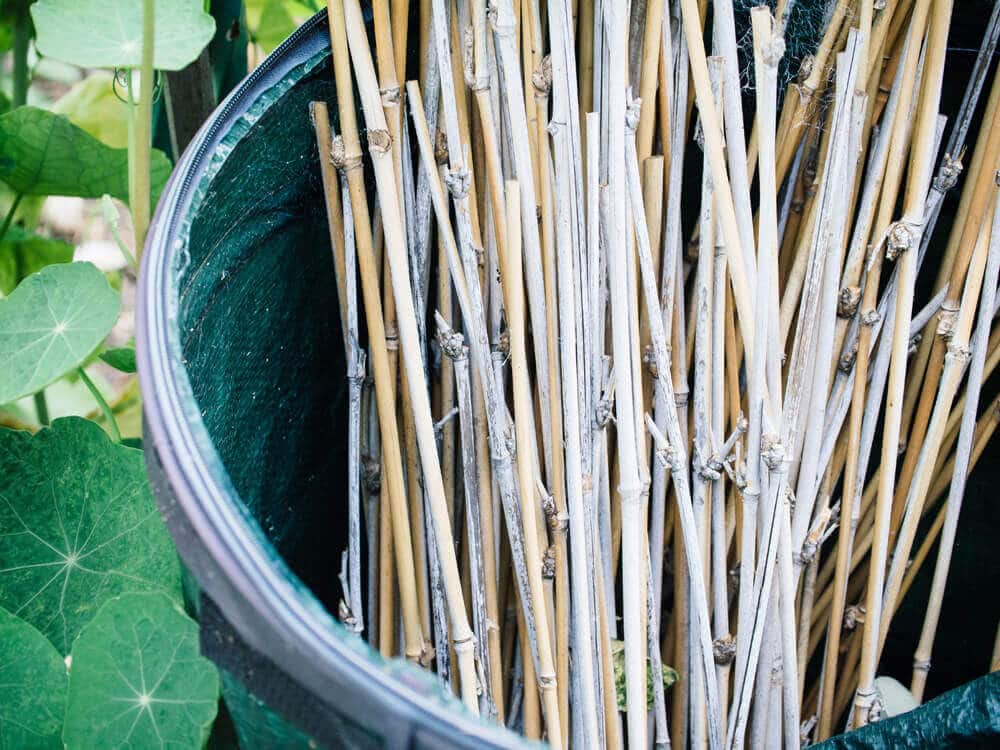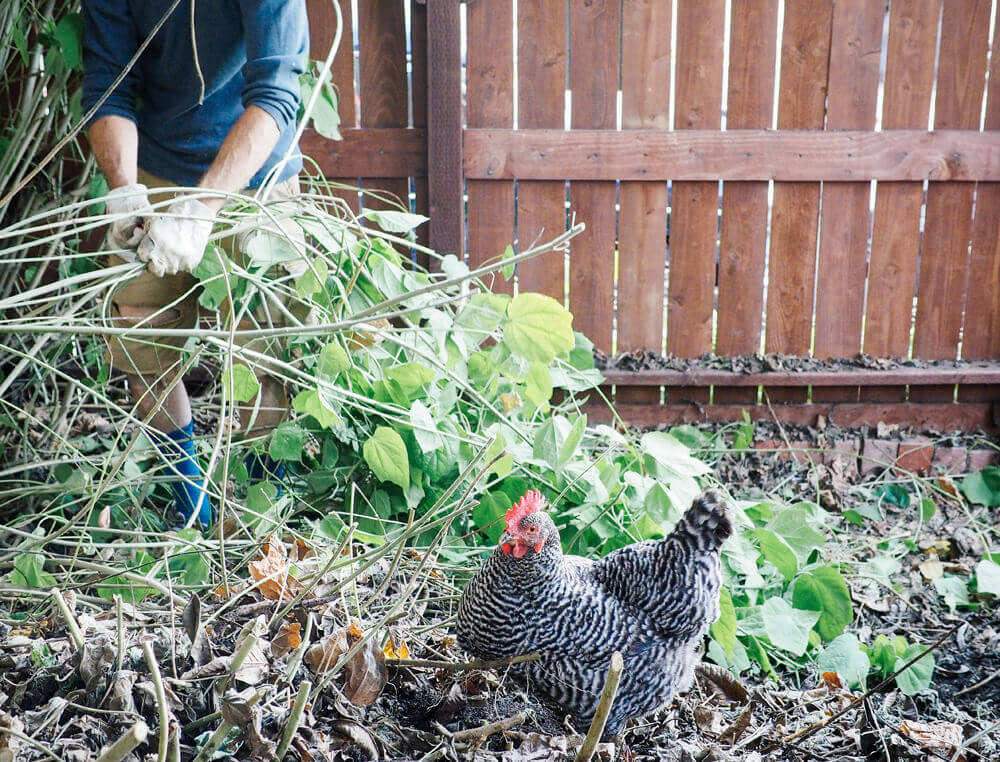Early spring can feel like a game of garden roulette: sunny and warm one week, tempting you to transplant all those seedlings you’d started inside, then wet and cold the next week, reminding you that frost isn’t entirely out of the picture.
If you’re itching to get outside but the unpredictable weather is reigning you in, there’s still plenty you can do around the yard before (and aside from) sowing seeds or putting tender seedlings in the ground.
The name of the game in March is “clean-up,” and this checklist will walk you through all the sometimes forgotten (or intentionally overlooked) tasks to help you tune-up your garden for prime planting season.

Tidy up the yard
While you wait for the mud to drain and dry in your planting beds, start sprucing up the rest of your yard (because we all know that once the season gets going, these spring garden chores are usually the last on the list to be tackled).
- Rake and collect debris. Add leaf litter to your compost heap, or set it aside to mulch your garden beds. If you have a wood chipper, run small sticks and pieces of bark through it to make your own organic mulch.
- Pull out old annuals. Fall-planted annuals that have died over winter should be removed and composted. Woody stems that take a while to break down can be fed through a wood chipper and used as mulch.
- Prune perennial plants and fruit trees. Any perennials (including ornamental grasses) that didn’t die back or weren’t cut back over winter should be trimmed to allow for new growth. Prune and shape unwieldy plants to control their size and spread. Remove dead wood and old foliage, especially at the base, where varmints like to take up residence. (Bamboo trimmings can be repurposed into garden stakes.) This is also your last chance to prune fruit trees, berry bushes, and grapevines before they set blossoms.
- Divide clumping perennials to give the roots more room to grow. Plant the divisions around your yard to fill in bare spots.
- Clean up the boundaries of beds and borders with an edging tool. Get weeds under control while they’re still young and easy to pull out of damp earth.

Prep garden beds for planting
Once the ground is thawed and the soil starts to look like soft, crumbly earth (and not heavy, sodden mud), start grooming your garden beds to bring them back to life.
- Rake off old mulch. Add the mulch to the compost heap and pull up any vegetables left over from your winter crop. Remove rocks, sticks, and weeds so the beds are clear of all debris.
- Pull out soaker hoses and drip irrigation lines. Set them aside to make way for digging and planting. Inspect the valves, hoses, tubes, and emitters for wear and tear, and repair or replace the parts as needed.
- Incorporate cover crops to improve the soil. If the plants are too tall to cut down easily with a pair of hedge shears, chop them with a weed trimmer or lawn mower and leave the plants on top of the soil to decompose for two to three weeks before planting in the bed. Use the old cover crops as mulch for the new plants.
- Top up fertility. Spread at least 3 inches of compost on the bed and work it into the top 6 inches of soil with a spade or fork. Add any other amendments needed, then rake the surface smooth and water them in well. Let the soil rest for at least a day before planting. (Alternatively, if you’ve had problems growing in your garden and can’t seem to solve them, you might want to consider sending soil samples to a lab for an in-depth analysis. Contact your local cooperative extension for more information on soil testing.)
- Install, replace, or repair trellises. If they are crop-specific, remember to move them to different beds as you rotate your crops each year. Organize tomato cages, stakes, and clips to see what you need to toss, keep, or add to your shopping list.

Take stock of your tools
Early spring is the ideal time to assess the overall condition of your tools, especially those that have been left outside. Properly maintained tools will not only last longer, they’ll allow you to work more efficiently and safely in the garden.
- Sharpen and oil your pruners and shears. Sand off any rust with steel wool, sharpen the blades with a carbide sharpener or whetstone, and coat the blades and pivot joints with a thin film of oil. Wipe off any excess oil before storing. (If you prefer to have a professional do it, many hardware stores and garden centers offer this service.) For the DIYer, here’s a handy guide on how I (easily!) maintain my gardening tools throughout the year.
- Repair or replace digging tools. Check your spades, shovels, and garden forks for cracked or broken handles or tines. If it’s a quality tool that’s served you well, consider repairing it with a new part (or sending it in for repair).
- Check and clean your tools, pots, and trays. Assuming you cleaned and organized your tools before putting them away last season, you might not need to do much here (especially if you’re like me and don’t bother washing pots — and there’s nothing wrong with that). A stiff brush works well for clearing cobwebs and loosening crusted dirt, and a simple wash in soapy water should suffice for anything that needs a little TLC. As you inventory your supplies, check them for damage (especially flimsy plastic pots and trays) and toss the ones that can’t be salvaged.

This post updated from an article that originally appeared on March 17, 2017.
View the Web Story on spring garden checklist.
















Thank you for this post. I have just come from the garden, the weather here (England) is acceptable and some of my plants are already outside, but I spent most of the day raking up leaves and digging up the vegetable beds. Yay for spring chores! 🙂